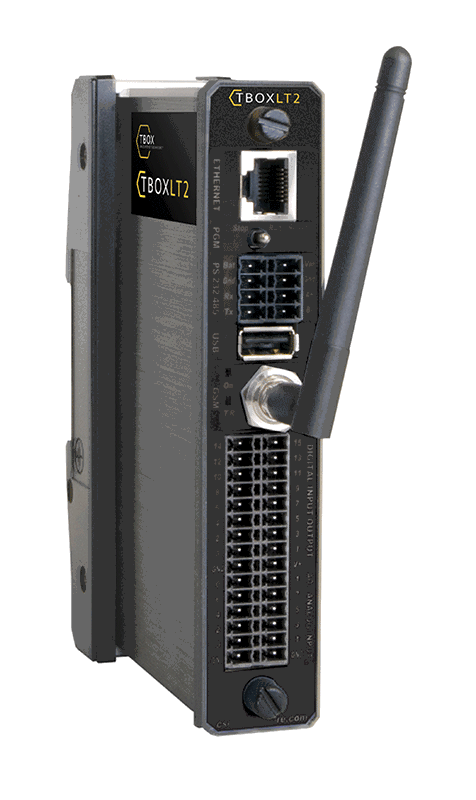7th March 2024
Remote telemetry systems address technical complexities and foster a collaborative approach in smart grids
Smart grids are revolutionising electricity distribution, but managing the myriad of new renewable energy sources is becoming an increasingly complex task for network operators due to the integration of Distributed Energy Resources (DERs). Here, Etienne Clauw, associate product line manager for remote telemetry units (RTUs) at Ovarro, explains why RTUs are proving essential for data analysis, management and decentralised network management in smart grids.
The North American Power Grid, often dubbed the "largest machine" created by humans, encompasses 5.5 million distribution lines and 600,000 miles of transmission lines. Its complexity arises from diverse energy sources, interconnections, varying state regulations and ageing infrastructure. That grid, like other traditional networks, will become more complex over the coming years as they adapt to the new era of smart technologies and renewable energy.
 Indeed, according to Recharge, the US has 36 “ready to go” renewable projects in the pipeline, which would double the nation’s renewables base and add a further 10,000 miles and 132 gigawatts (GW) of transmission capacity to the country’s electric grid.
Indeed, according to Recharge, the US has 36 “ready to go” renewable projects in the pipeline, which would double the nation’s renewables base and add a further 10,000 miles and 132 gigawatts (GW) of transmission capacity to the country’s electric grid.
Unlike traditional energy sources, the rise of low-voltage and changeable DERs, like solar and wind farms, introduces new challenges to the electric grid. These DERs, dependent on factors like weather conditions, create network imbalances in frequencies and voltages, necessitating collaboration among a growing number of stakeholders.
In contrast to the centralised structure of traditional energy systems, smart grids are evolving toward a decentralised model.
A study by the University of Peshawar, Internet of Energy: Opportunities, applications, architectures and challenges in smart industries published in Computers & Electrical Engineering describes a "decentralised topology with centralised management and interactive network," using Internet of Energy (IoE) technologies for upgrading and automating electricity infrastructures. However, smart grid data management faces challenges such as data aggregation quality, security, compliance control, common scope and efficiency of the management mechanism.
An interactive approach
JRC Smart Electricity Systems, the European Commission's in-house science service, advocates for an approach that considers the technological, social, business and environmental complexities of smart grids. This unified view aims to promote sustainability and resilience through model-based problem-solving — or, to paraphrase the study Blockchain in Smart Grids: A Review on Different Use Cases published in Sensors, optimising energy generation and consumption using smart systems that can monitor and interact with each other.
Accurate and consistent data monitoring and analysis are crucial for controlling and monitoring smart grid systems, including weather forecasts and power generation status reports. The realisation of specific, measurable, achievable, relevant, and time-bound (SMART) objectives for future energy networks relies on data analysis and decentralised network management.
To address the complexity of modern power systems, RTUs, such as Ovarro's TBox, have been instrumental. Applications include monitoring solar PV power plants in France, which saw Ovarro involved in the installation of over 250 megawatts (MW) of solar PV power plants across more than 30 sites.
PV farms, distributed across large geographical areas, present unique challenges due to their dispersed assets. TBox RTUs in France manage over 30 solar PV power plant sites, each with up to 2,500 data points for billing, production verification and safe operation. TBox RTUs ensure continuous data access through redundant communication channels, combining ADSL with cellular (3G/4G) backup. Cybersecurity is maintained through integrated firewalls, allowing remote access to both the TBox and other networked assets while storing data locally in case of total communications failure.
Collaborative approach
Ovarro's RTUs are integral components of the grid operator's wide area control system, coordinating information with utilities SCADA and network control systems. Built to higher specification levels for durability in harsh environments, these RTUs support multiple protocols and connections, serving as critical gateways between local sites and centralised SCADA/Control centres.
Ovarro's RTUs address technical complexities and foster a collaborative approach. While Ovarro provides hardware and software solutions, integration partners play a crucial role in creating, installing, commissioning and maintaining the system. This collaborative approach ensures the seamless integration of Ovarro's technologies into the broader smart grid infrastructure, promoting sustainability and resilience in the evolving energy landscape.
The transition towards smart energy will make grid management increasingly complex. Smart meters, distribution automation and renewable energy sources all have essential roles to play. But these technologies must complement one another, be easily manageable and support collaborations between growing numbers of stakeholders. Fortunately, this is where technologies like Ovarro’s TBox RTUs will prove critical in helping monitor, control and bring together the myriad of new renewable energy sources and, in doing so, ensure smart grids support operators’ SMART objectives.